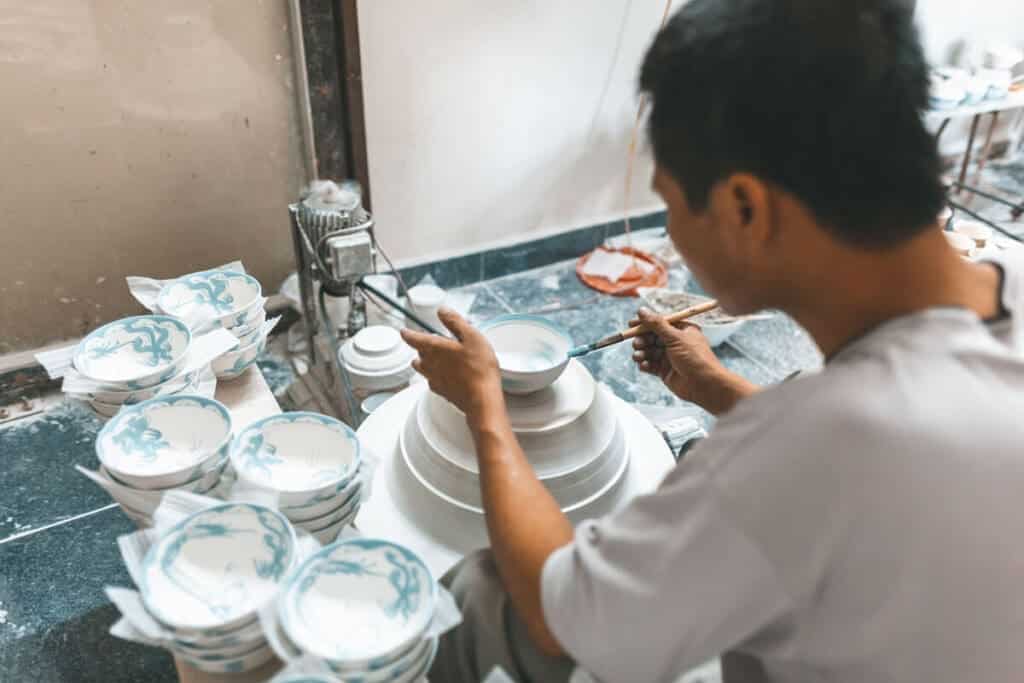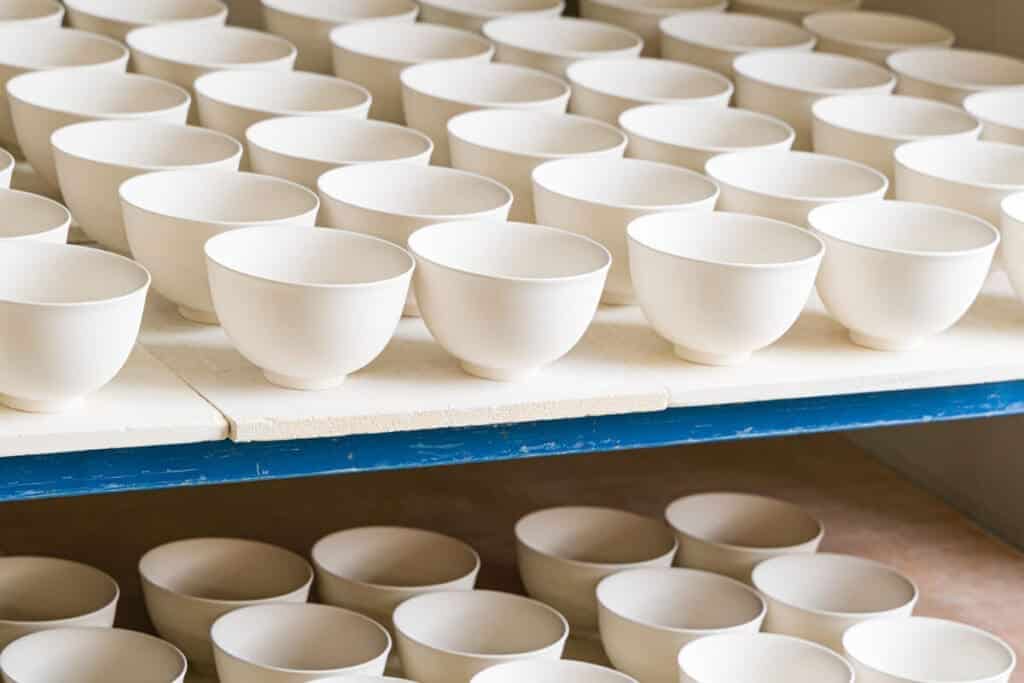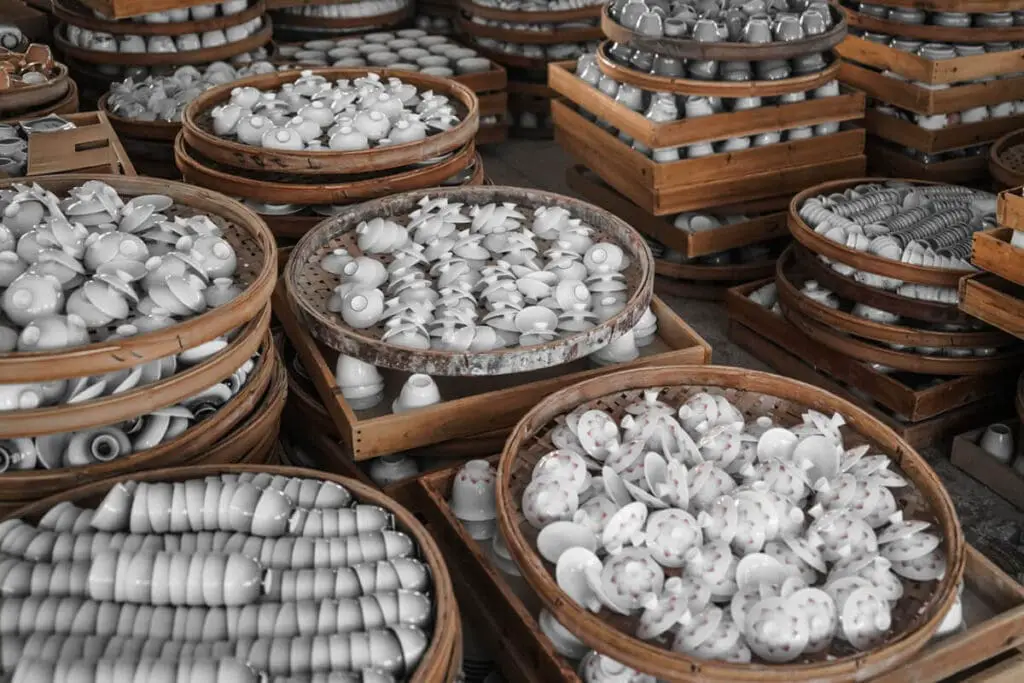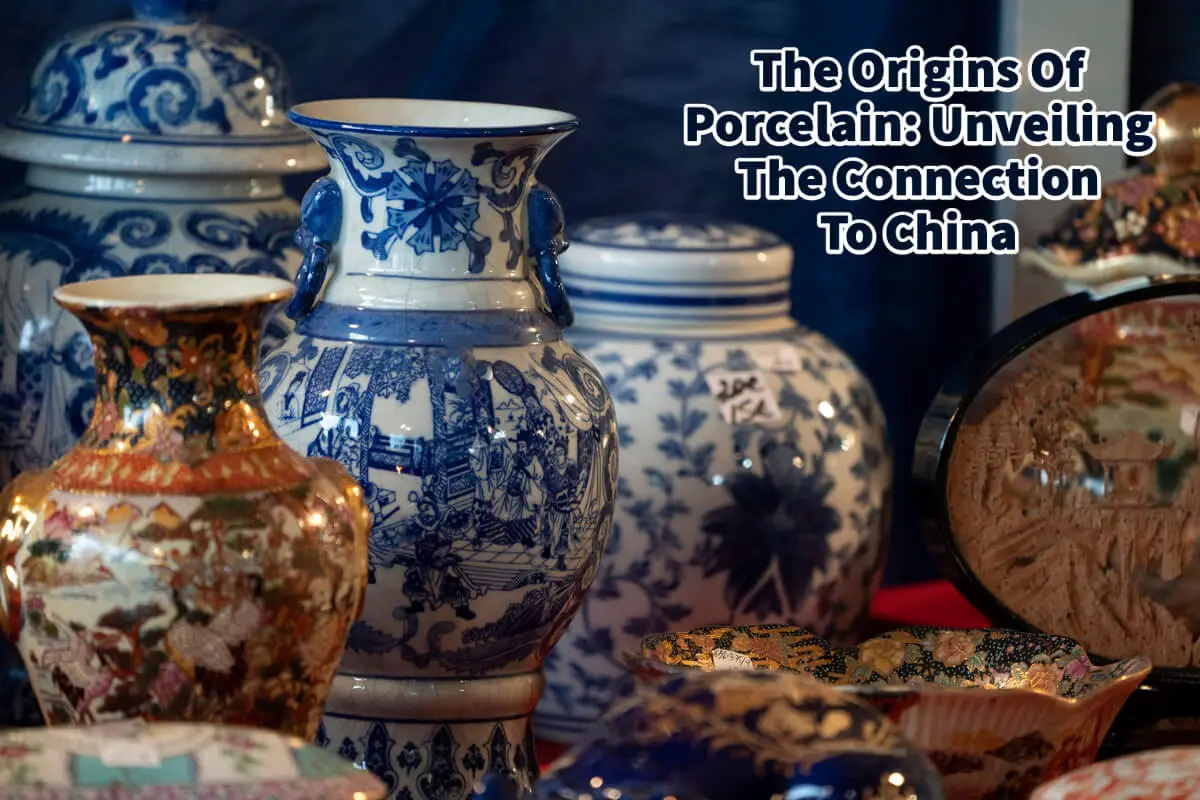Porcelain, often called “China,” is a remarkable ceramic material renowned for its delicate beauty and strength. China has been used to refer to these superb materials for centuries.
The name “China” has become synonymous with high-quality Porcelain, sparking curiosity about its origins and the reasons behind this unique association. Read on as we will delve into the history, cultural significance, and qualities of Porcelain that led to its association with China.
Table of Contents
- The History Of Porcelain China Explored
- The Ancient Origins Of Porcelain
- The Chinese Imperial Connection Of Porcelain
- The Cultural Significance Of The Word China For Porcelain
- The Evolution Of The Word “China” For Porcelain
- The Exceptional Qualities Of Chinese Porcelain Explored
- China And Porcelain Production
- China’s Influence On Global Porcelain Production
- Frequently Asked Question
- Related Content
The History Of Porcelain China Explored
Porcelain, or China as we know it, has a long history. Making items out of porcelain has been around for a long time. We will explore its historical roots to understand why Porcelain is called China.
Below we will explore some significant periods of porcelain or China production.
The Ancient Origins Of Porcelain
The production of porcelain dates back to ancient China, specifically to the Eastern Han Dynasty (25-220 AD) and the subsequent Six Dynasties period (220-589 AD). The Chinese people discovered a remarkable way to create a translucent, white ceramic that was both strong and aesthetically pleasing.
The ancient Porcelain is not precisely the kind of Porcelain we know today. But this shows how old some Porcelain production was in China.

The Chinese Imperial Connection Of Porcelain
During the Tang Dynasty (618-907 AD), porcelain production flourished, spreading its popularity beyond China’s borders. The Tang Dynasty was the time that most people say that porcelain production started in China.
Emperors of the Tang Dynasty recognized the exceptional quality of Chinese Porcelain and began exporting it to other nations along the Silk Road. The word “Porcelain” is thought to come from Marco Polo or the Italian word porcellana that Marco Polo used when he saw the Chinese porcelain pottery.
The Cultural Significance Of The Word China For Porcelain
“China” as a synonym for Porcelain emerged during the European Renaissance. European merchants and explorers who encountered Chinese Porcelain were captivated by its exquisite craftsmanship and unique properties.
As Porcelain was highly valued and associated with luxury, it became a coveted commodity among the European elite. Many referred to it as China to show where the pottery came from, i.e., the country of China.
The Evolution Of The Word “China” For Porcelain
Over time, “China” evolved to refer to Porcelain and the country of origin for porcelain. Europeans began using “China” as a shorthand for Porcelain, reflecting its Chinese origins. This linguistic shift solidified the connection between the material and the nation.
The Chinese do not call their nation China, but in Chinese, it is Zhongguo, which means “Middle Kingdom.” The term Middle Kingdom comes from the Chinese belief that China is the center of the world and all the other nations revolve around or go around it.
All the Chiense world maps show China in the center of the map or the center of the world. This is not that much different than in America; most world maps also show America in the center of the map.

The Exceptional Qualities Of Chinese Porcelain Explored
Porcelain’s reputation as the finest ceramic material is due to its exceptional qualities. All these exceptional qualities continued to show the world that Chinese porcelain was superior in many ways to the pottery that was then made in Europe.
This is because traditional Chinese Porcelain exhibits a pure white color, a translucent quality, and a smooth, glass-like finish. Its remarkable strength and durability make it ideal for delicate and functional objects.
The meticulous craftsmanship, intricate designs, and vibrant patterns further enhance its allure. So very quickly, Chi,nese Porcelain gained popularity among the Europeans.
China And Porcelain Production
China remained the leading producer of Porcelain for centuries. Its artisans refined the manufacturing techniques and continued to innovate, creating different styles such as blue and white Porcelain, Famille rose, and celadon.

The other issue is that porcelain production is based on clay; for porcelain to be made, the manufacturers need access to the clay. For example, Vietnam does not produce porcelain; instead they produce ceramic. Vietnam does not naturally have clay to make porcelain like China does.
Because China has the raw materials, the Chinese porcelain industry thrived, establishing the country as the unrivaled hub of porcelain production. Some traditional places in China where porcelain was made include Jingdezhen in Jiangxi, Liling in Hunan, Dehua in Fujian, Shiwan in Guangdong, Tangshan in Hebei, and Zibo in Shandong.
China’s Influence On Global Porcelain Production
China’s porcelain expertise has a profound impact on other nations. As trade routes expanded, the knowledge and techniques of Chinese porcelain manufacturing spread to other parts of the world.
Notably, the Meissen factory in Germany successfully recreated Porcelain, imitating Chinese styles and designs. It is this connection between China and Porcelain that the name China has continued to refer to the products made from Porcelain.
This also shows that Porcelain has a rich history, exceptional qualities, and cultural significance, so the material has earned the name “China” due to its origin. The superior craftsmanship and distinctive features of Chinese Porcelain fascinate people worldwide, cementing China’s reputation as the premier source of this exquisite ceramic material.
Although other nations have since embraced porcelain production, the legacy of Chinese Porcelain endures, ensuring that the term “China” will forever be associated with this unique art form and material.
Find out more about how Mondoro can help you create, develop, and manufacture fantastic home decor and home furniture products – don’t hesitate to contact me, Anita. Check out my email by clicking here or become a part of our community and join our newsletter by clicking here.
Mondoro gives out a FREE Lookbook to anyone interested. You can receive a copy of our latest Lookbook by clicking here.
Listen to our Podcast called Global Trade Gal. You can find it on all major podcast platforms. Try out to listen to one of our podcasts by clicking here.
Subscribe to our Mondoro Company Limited YouTube Channel filled with great videos and information by clicking here.
Frequently Asked Question
What is porcelain?
Porcelain is a type of ceramic material made from a mixture of clay, feldspar, and silica. It is fired at high temperatures, resulting in a hard, durable, and translucent product.
Why is porcelain often called “China”?
The term “China” is often used as a synonym for porcelain because China was historically one of the first and foremost producers of this ceramic material. It has a long-standing reputation for producing high-quality porcelain.
What is the history of porcelain?
Porcelain has a rich history dating back over 2,000 years. It originated in China during the Eastern Han Dynasty (AD 25-220) and was initially reserved for the imperial court. Eventually, it spread to other parts of the world through trade.
What makes porcelain unique?
Porcelain is known for its unique qualities, such as its translucent appearance, durability, and ability to hold intricate details. It is also resistant to staining and can withstand high temperatures.
How is porcelain made?
Porcelain is made by mixing clay, feldspar, and silica into a paste-like consistency. The mixture is then shaped, dried, and fired at extremely high temperatures, usually between 1,200 and 1,450 degrees Celsius (2,200 and 2,650 degrees Fahrenheit).
What are the different types of porcelain?
There are various types of porcelain, including hard-paste porcelain, soft-paste porcelain, and bone china. Hard-paste porcelain is made from a mix of kaolin clay and petuntse, while soft-paste porcelain uses clay mixed with glassy materials. Bone china contains bone ash in addition to other ingredients.
Can porcelain be used for everyday purposes?
Yes, porcelain is commonly used for everyday purposes. It is widely used for tableware, including plates, bowls, and cups, as well as for bathroom fixtures, tiles, and decorative items.
Is porcelain dishwasher and microwave safe?
Most porcelain tableware is dishwasher safe. However, it’s important to check the manufacturer’s instructions to ensure proper care. While porcelain is generally microwave safe, certain pieces with metallic or decorative accents may not be suitable for microwave use.
Related Content
How to Manufacture Vietnamese Lacquerware? An Insider’s Guide To Lacquer
Vietnamese lacquer requires many manufacturing steps in the lacquer production process, including making the base, preparing the lacquer base to be applied, and finally, applying the lacquer paint onto the surface. Every piece must be carefully sanded to give it a very smooth surface. Vietnamese lacquerware production requires a lot of skill and knowledge.
You can discover more by reading How to Manufacture Vietnamese Lacquerware? An Insider’s Guide To Lacquer by clicking here.
10 Great Vietnamese Home Décor Product Finishes and Techniques We Love
We love many techniques, materials, and finishes in Vietnam, but some of our favorites are Vietnamese lacquer, mother of pearl, eggshell, and faux paper finishes. We also do some unique woven rattan and linen techniques.
You can discover more by reading 10 Great Vietnamese Home Décor Product Finishes and Techniques We Love by clicking here.
Vietnam’s Top 10 Handicraft Villages Discovered
Today 10 Vietnamese handicraft villages are still manufacturing many of the same products they have produced for hundreds if not thousands of years. Some of these villages include Bat Trang Ceramic Village, Duyen Thai Lacquer Village, Quat Dong Embroidery Village, Van Phuc Silk Village, Kim Son Sea Grass Village, Ninh Binh Water Hyacinth Villages, Chuong My Rattan Village, Thuong Tinh Horn Village, Thanh Oai Conical Hat Village, and Xuan Lai Bamboo Village.
You can discover more by reading Vietnam’s Top 10 Handicraft Villages Discovered by clicking here.


